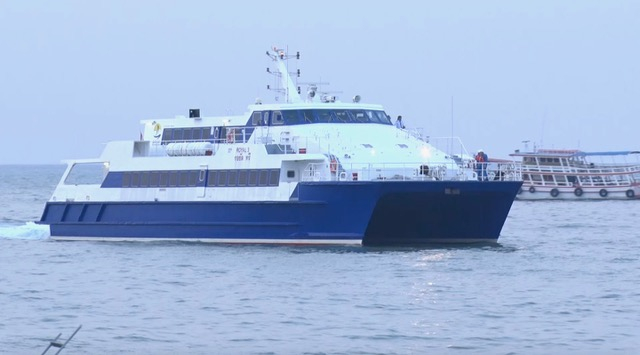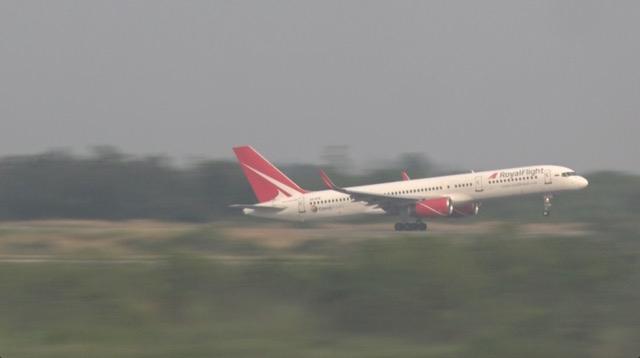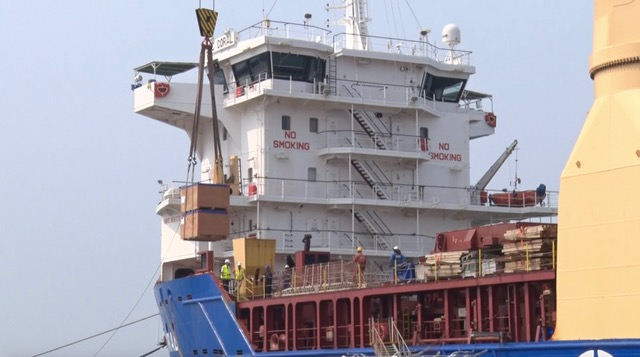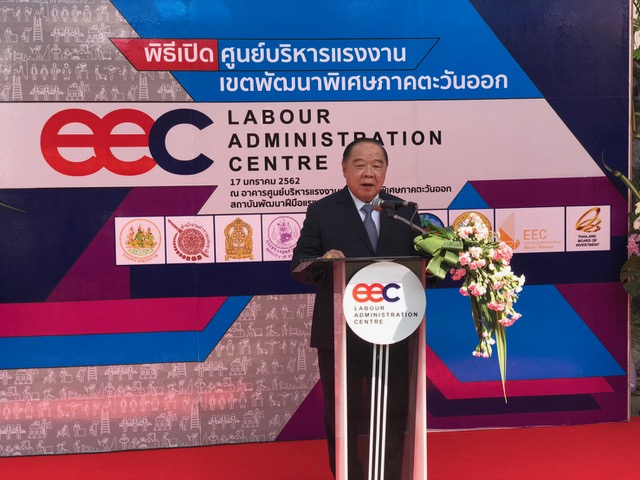
Money Stories
20:54, 12-Apr-2019
BRI Projects: BRI projects inject new vitality to Thai business
Updated
23:04, 18-Apr-2019
Martin Lowe
02:25

Planes, trains and automobiles (to borrow the name of a classic movie) ... and not forgetting ships! Most forms of transport are getting a boost as the Thai government invests billions of U.S. dollars in infrastructure.
The plan is to place the country at the heart of Southeast Asian commerce.
The location is the country's eastern seaboard facing the Gulf of Thailand - now renamed the Eastern Economic Corridor, or EEC.
The EEC is Thailand's key target area for foreign and domestic investment, an essential part of China's Belt and Road initiative and is central to the country's Thailand 4.0 policy, which aims to transform the nation into a technology-based economy.

U-Tapao airport is the gateway to the Eastern Economic Corridor. /CGTN Photo
U-Tapao airport is the gateway to the Eastern Economic Corridor. /CGTN Photo
PLANES – U-Tapao airport is the gateway to the EEC and is being expanded to become Bangkok's third air hub. A second runway is to be built and a third terminal, seeing capacity leap from three to fifteen million passengers a year by 2022.
A development plan also includes new training, cargo and maintenance facilities, creating what will be called Thailand's ‘eastern aviation city'.
TRAINS – The Thai government is to construct a high-speed rail link connecting the country's three central airports: Suvarnabhumi, Don Mueang, and U-Tapao. The line will also continue to a major industrial port at Map Ta Phut, which is being enlarged to increase its capacity to handle cargo currently standing at around 45 million tons per year.
The line is additional to a major Chinese-Thai project to build a high-speed rail link from Bangkok to Thailand's northern border with Laos.

Sattahip commercial port is being developed to accommodate cruise liners, cargo ships and ferries. /CGTN Photo
Sattahip commercial port is being developed to accommodate cruise liners, cargo ships and ferries. /CGTN Photo
AUTOMOBILES – The EEC is home to manufacturing facilities operated by most of the world's biggest car-makers, principally from China, Japan and the U.S. Around two million vehicles are produced each year making Thailand the world's 10th largest auto industry.
Many road-building projects are underway to ensure easy access and distribution of cars, trucks and components.
SHIPS – A commercial seaport is being developed at Sattahip, the home of the Royal Thai Navy. With an investment of more than 60 million U.S. dollars, it will be able to accommodate cruise liners, cargo ships and ferries. There will be a hugely-increased capacity for goods, and passenger services to Cambodia, Singapore and Vietnam.
In a further boost to tourism, a sea link is connecting the holiday resorts of Pattaya and Hua Hin, a hundred kilometers apart across the Gulf of Thailand. High-speed catamarans can make the trip in two hours, more than halving the five-hour road journey. At present, the boats carry only passengers but it's planned to add vehicles in the future.

Thai Deputy Prime Minister Prawit Wongsuwan. /CGTN Photo
Thai Deputy Prime Minister Prawit Wongsuwan. /CGTN Photo
"The Thai government has formed the Eastern Economic Corridor as one of the major mechanisms to drive our 20-year national economic strategy through technology and innovation," said Thailand's Deputy Prime Minister Prawit Wongsuwan.
He said the EEC was closely linked to China's Belt and Road initiative. "The EEC and Belt and Road complement each other," he added.
The region is also home to a growing e-commerce base being developed in partnership with China's Alibaba group and more than 100 Chinese companies have opened factories at a huge Thai-Chinese industrial zone.
These big-ticket projects aim to make the EEC an 'engine for growth' across Southeast Asia, a major contributor to Belt and Road and a driver for Thailand's economic future.

SITEMAP
Copyright © 2018 CGTN. Beijing ICP prepared NO.16065310-3
Copyright © 2018 CGTN. Beijing ICP prepared NO.16065310-3